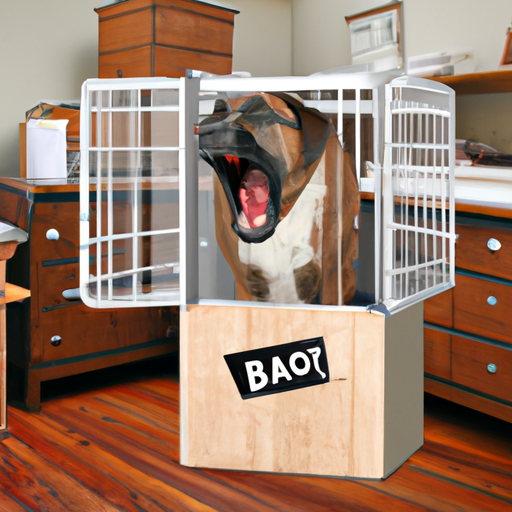Introduction
You’ve just brought home your new four-legged friend, or maybe your loyal companion has been with you for years. But there’s one problem that’s causing a bit of friction: your dog barks in the crate. It’s a common issue that many dog owners face, and it can be distressing for both you and your furry friend.
Understanding why this happens and how to address it is crucial for your peace of mind, and more importantly, for your dog’s wellbeing.
1. Understanding Why Dogs Bark in the Crate
Dogs bark for various reasons. When it comes to barking in the crate, the reasons could include:
- Separation Anxiety: Dogs are pack animals and being separated from their pack can cause anxiety.
- Boredom: Dogs need mental and physical stimulation. If they’re not getting enough, they might bark to express their frustration.
- Fear or Discomfort: If your dog associates the crate with negative experiences, they may bark due to fear or distress.
2. Common Signs of Distress
Being able to identify signs of distress in your dog can help you understand the root cause of the barking. Common signs include:
- Excessive barking or howling
- Pacing or restlessness
- Destructive behavior
- Attempts to escape the crate
These signs indicate that your dog is not comfortable being crated and needs your help to feel secure and relaxed.
3. Creating a Positive Crate Experience
To help your dog feel more comfortable in their crate, consider the following:
- Choose the right crate: Ensure it’s the right size for your dog. They should be able to stand, turn around, and lie down comfortably.
- Make it comfortable: Add soft bedding and favorite toys.
- Location matters: Place the crate in a quiet, low-traffic area where your dog can relax.
4. Training Techniques to Reduce Barking
Training your dog to feel comfortable in their crate can take time and patience. Here are some steps to follow:
- Introduce the crate gradually: Start by feeding your dog their meals in the crate. Once they’re comfortable with that, you can start closing the door while they eat.
- Use positive reinforcement: Reward your dog for quiet, calm behavior in the crate. Treats, praise, and toys can all be effective rewards.
- Increase crate time slowly: Gradually increase the amount of time your dog spends in the crate. Start with short periods and gradually extend the length.
- Provide plenty of exercise: A tired dog is a good dog. Make sure your dog gets plenty of physical and mental exercise throughout the day.
5. Seeking Professional Help
If you’ve tried everything and your dog continues to bark in the crate, it might be time to seek professional help. A professional dog trainer or a veterinary behaviorist can provide personalized advice and strategies based on your dog’s specific needs and behaviors.
6. Additional Tools and Resources
There are many tools and resources available that can help you address this issue. Some of the most effective include:
- Puzzle Toys: These toys can keep your dog mentally stimulated while they’re in the crate.
- White Noise Machine: This can help mask external sounds that might be causing your dog stress.
- Calming Aids: Products like calming sprays, collars, or diffusers can help reduce your dog’s anxiety.
Frequently Asked Questions (FAQ)
1. Why does my dog only bark in the crate at night?
This could be due to separation anxiety or fear of the dark. Consider using a night light or white noise machine to comfort your dog.
2. How long should I let my dog bark in the crate?
This depends on the cause. If your dog is suffering from separation anxiety, it’s important to address the root issue rather than ignoring the barking.
3. Is it cruel to crate a dog?
Not at all, when done correctly. Crating can provide a safe and comforting space for dogs. It’s important to ensure the crate is a positive environment and is not used for punishment.
4. Can a dog hold its bladder all night?
Most adult dogs can hold their bladder for about 8 hours. Puppies will need to be let out more frequently.
Deciphering the cause of your dog’s barking and implementing solutions to create a more positive crate experience can significantly enhance your dog’s wellbeing and your own peace of mind. Remember, patience and consistency are key. It’s a journey, and with the right information and approach, a quiet, peaceful crate time is achievable.



